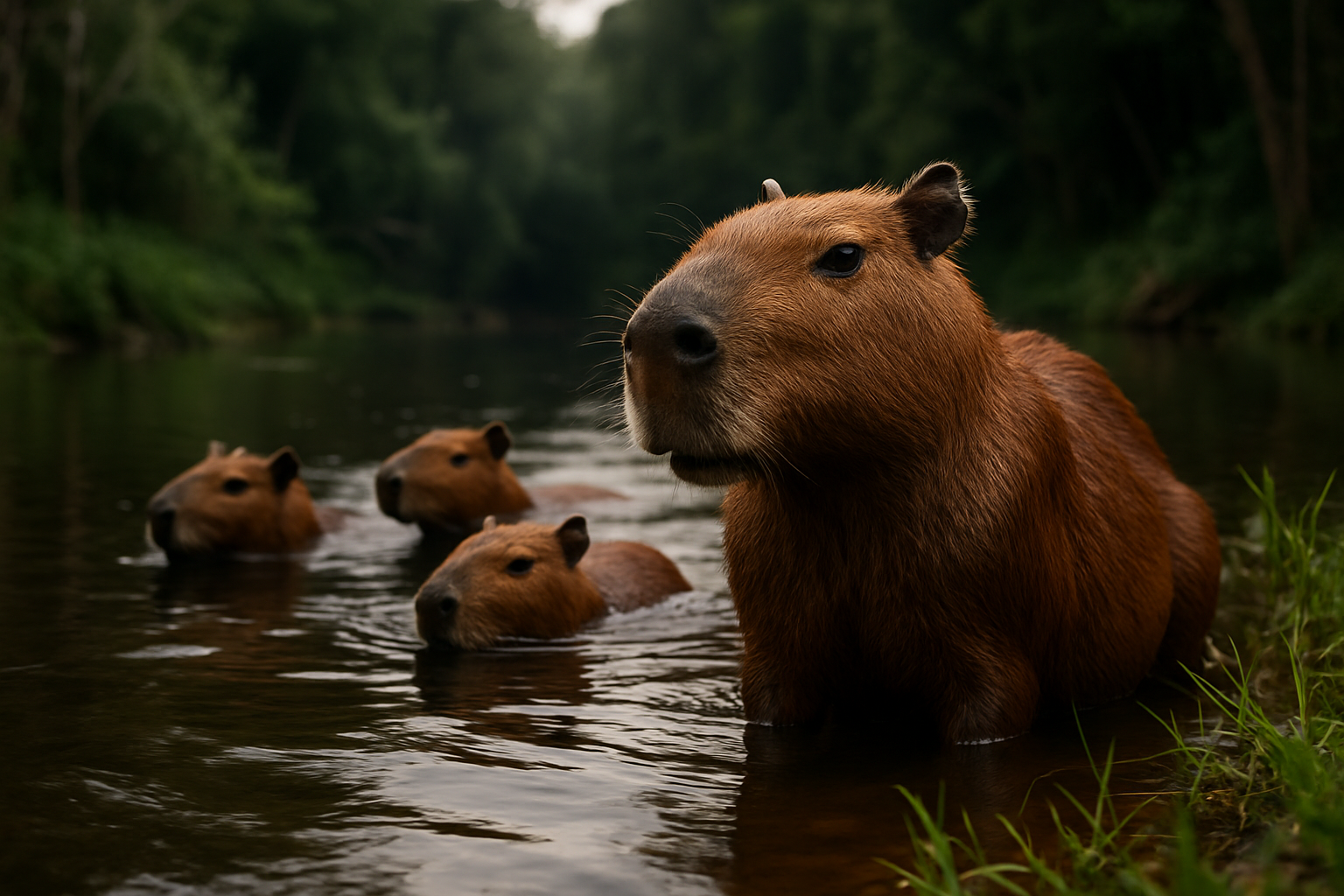The Hidden World of Capybara Social Dynamics
Imagine a rodent the size of a small dog, with a gentle demeanor and an uncanny ability to form complex social bonds. Welcome to the fascinating realm of capybaras, the world's largest rodents. These remarkable creatures, native to South America, have captivated animal enthusiasts and researchers alike with their intricate social structures and unique behaviors. In this article, we'll dive deep into the hidden world of capybara social dynamics, exploring their communal living, hierarchical systems, and surprising interactions with other species.

The Hierarchy of the Herd
At the heart of capybara social structure lies a well-defined hierarchy. Typically, a dominant male leads the group, with females and subordinate males falling into place beneath him. This alpha male plays a crucial role in maintaining order within the herd, mediating conflicts and guarding against potential threats. Interestingly, the hierarchy is not static; challenges to leadership can occur, particularly during breeding seasons when competition for mates intensifies.
Cooperative Living: The Key to Survival
Capybaras have evolved a remarkable system of cooperative living that enhances their chances of survival in the wild. Members of the herd take turns keeping watch for predators, allowing others to graze or rest without constant vigilance. This shared responsibility ensures the safety of the entire group and exemplifies the benefits of their social lifestyle. Additionally, capybaras engage in mutual grooming, strengthening social bonds and maintaining hygiene within the community.
The Nursery System: Communal Child-Rearing
One of the most fascinating aspects of capybara social dynamics is their approach to raising young. Female capybaras often synchronize their breeding cycles, giving birth around the same time. This coordination results in a communal nursery system where mothers collectively care for all the group’s offspring. Young capybaras, known as pups, can nurse from any lactating female in the herd, a practice that ensures better survival rates and fosters strong social connections from an early age.
Interspecies Interactions: The Capybara’s Surprising Friendships
Perhaps one of the most intriguing aspects of capybara behavior is their apparent ability to form friendly relationships with other species. In both wild and captive settings, capybaras have been observed peacefully coexisting with a diverse array of animals, from birds to monkeys and even large predators like caimans. This remarkable tolerance has earned them a reputation as nature’s most laid-back creatures and has sparked interest in studying the mechanisms behind these unusual interspecies dynamics.
The Language of Capybaras: Vocalizations and Body Language
Communication plays a vital role in maintaining capybara social structures. These animals possess a rich repertoire of vocalizations, including whistles, barks, and purrs, each serving a specific purpose in group interactions. Low-pitched warning calls alert the herd to potential dangers, while high-pitched squeaks are often used by pups to communicate with their mothers. Additionally, capybaras use a variety of body language cues, such as teeth chattering and scent marking, to convey information about social status and territorial boundaries.
Adaptations to Aquatic Life: A Social Advantage
Capybaras are semi-aquatic mammals, and their affinity for water has shaped their social behaviors in unique ways. Groups often gather near water sources, using rivers and ponds as natural barriers against predators and as escape routes when threatened. Their swimming abilities allow them to forage in aquatic environments, expanding their dietary options and reducing competition within the herd. This aquatic lifestyle has likely contributed to the evolution of their strong social bonds, as group cohesion is essential for survival in these environments.
The Impact of Human Activity on Capybara Societies
As human populations expand into capybara habitats, these social rodents face new challenges. In some areas, habitat loss has forced capybaras to adapt to urban environments, leading to fascinating changes in their social dynamics. Urban capybaras have been observed forming smaller, more flexible groups and demonstrating increased tolerance for human presence. However, this proximity to humans also brings risks, including conflicts with agriculture and potential disease transmission.
Conservation Implications of Capybara Social Behavior
Understanding the intricacies of capybara social dynamics is crucial for effective conservation efforts. Their complex social structures mean that capybaras require substantial habitat areas to maintain healthy populations. Conservation strategies must take into account the need for preserving not just individual animals, but entire social groups and their ecosystems. Additionally, the capybara’s role as a keystone species in many South American environments underscores the importance of protecting these charismatic rodents and their social systems.
The Future of Capybara Research
As our understanding of capybara social dynamics grows, new questions continue to emerge. Researchers are now exploring the cognitive abilities that underpin these complex social behaviors, investigating the potential for capybara self-awareness and emotional intelligence. Advanced tracking technologies and long-term field studies promise to reveal even more about the hidden world of these fascinating creatures, potentially offering insights that could inform our understanding of social evolution across species.
The intricate social lives of capybaras offer a window into the complexity of animal societies. From their hierarchical structures to their communal child-rearing practices, these remarkable rodents challenge our perceptions of social intelligence in the animal kingdom. As we continue to unravel the mysteries of capybara social dynamics, we gain not only a deeper appreciation for these charismatic creatures but also valuable insights into the diverse ways in which social living can evolve in nature.





